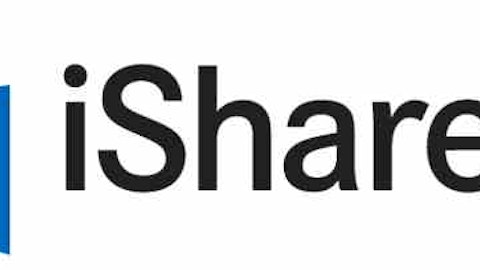Many investors have embraced the exchange-traded product structure as the preferred vehicle for accessing broad based commodity exposure. Investors have a whole host of options available to them, with some funds focusing in on specific commodity families, while other offerings employ unique methodologies to help fight the impacts of contango. One of the oldest ETPs offering broad exposure to the commodity market is the iShares S&P GSCI Commodity-Indexed (NYSEARCA:GSG), which has amassed close to $1.3 billion in assets under management since its launch in the latter half of 2006 [for more commodity ETF news and analysis subscribe to our free newsletter].
GSG is similar to other broad commodity ETPs in many ways, however, its product structure results in a unique risk/return profile that may attract some investors while potentially turning away other.
Vital Stats
Here’s a quick overview of the basics of GSG:
Issuer: iShares
Index: S&P GSCI Total Return Index
Number of Commodities: 24
Largest Allocation:Energy (69.05%)
Inception Date: July 10, 2006
Expense Ratio: 0.75%
Assets: $1.3 billion (as of 10/16/2012)
Structure: Commodity Pool / Partnership
Under The Hood
GSG seeks to replicate the S&P GSCI Total Return Index, a benchmark that consists of 24 different commodity futures contracts. The index breakdown by commodity family is presented in the following table (as of 10/16/2012) :
| Commodity Group | Index Weight |
| Energy | 69.05% |
| Agriculture | 16.08% |
| Industrial Metals | 6.64% |
| Livestock | 4.57% |
| Precious Metals | 3.65% |
GSG includes positions in all of the major segments of the commodity market, including exposure toenergy, precious metals, agriculture, industrial metals, and livestock. But these weightings are far from equal; GSG’s underlying portfolio is heavily tilted towards energy commodities, which account for over two thirds of total assets.
Noteworthy Features
Despite having a bias towards energy, there are several aspects of GSG that warrant a closer look. First, it is important to not the structure of this product: GSG is a commodity pool, meaning that shareholders are limited partners in the investment trust. This type of structure has unique tax ramifications, as holders of GSG will incur a liability annually, regardless of whether a position is liquidated. During periods of strong gains, GSG may present investors with a significant tax liability, making it less than optimal for many long-term, buy-and-hold portfolios. Shareholders of GSG should also be aware that they must fill out a K-1 tax form at the end of every year, which may increase the administrative burden associated with this product.
As with all futures-based products, it is important for investors to keep in mind that GSG is subject to tracking error, which could potentially have a significant impact on bottom-line returns over the long haul. Frequent monitoring of positions and having a full understanding of how futures-based ETPs work is essential for mitigating the nuances that are inherent in this fund [see also Can Commodity ETFs Hedge Your Everyday Expenses?].
It should be noted that iPath offers an ETN linked to the same index that is the basis for GSG; for those looking to avoid the potential tracking error and tax consequences, GSP might be a more interesting product.
How To Use
GSG features a host of drawbacks and nuances that make it less than ideal for those looking to add well-rounded commodity exposure to their portfolios. But considering the fund’s bias towards energy commodities, GSG may be an appealing option for investors who want to establish a tactical tilt towards this corner of the market, but don’t necessarily want to go “all in”. The remaining allocations to agricultural and industrial metals could serve as a nice cushion against volatile movements that are often seen in energy commodities [see also Five Essential ETF Resources for Commodity Investors].
This article was originally written by Daniela Pylypczak, and posted on CommodityHQ.


